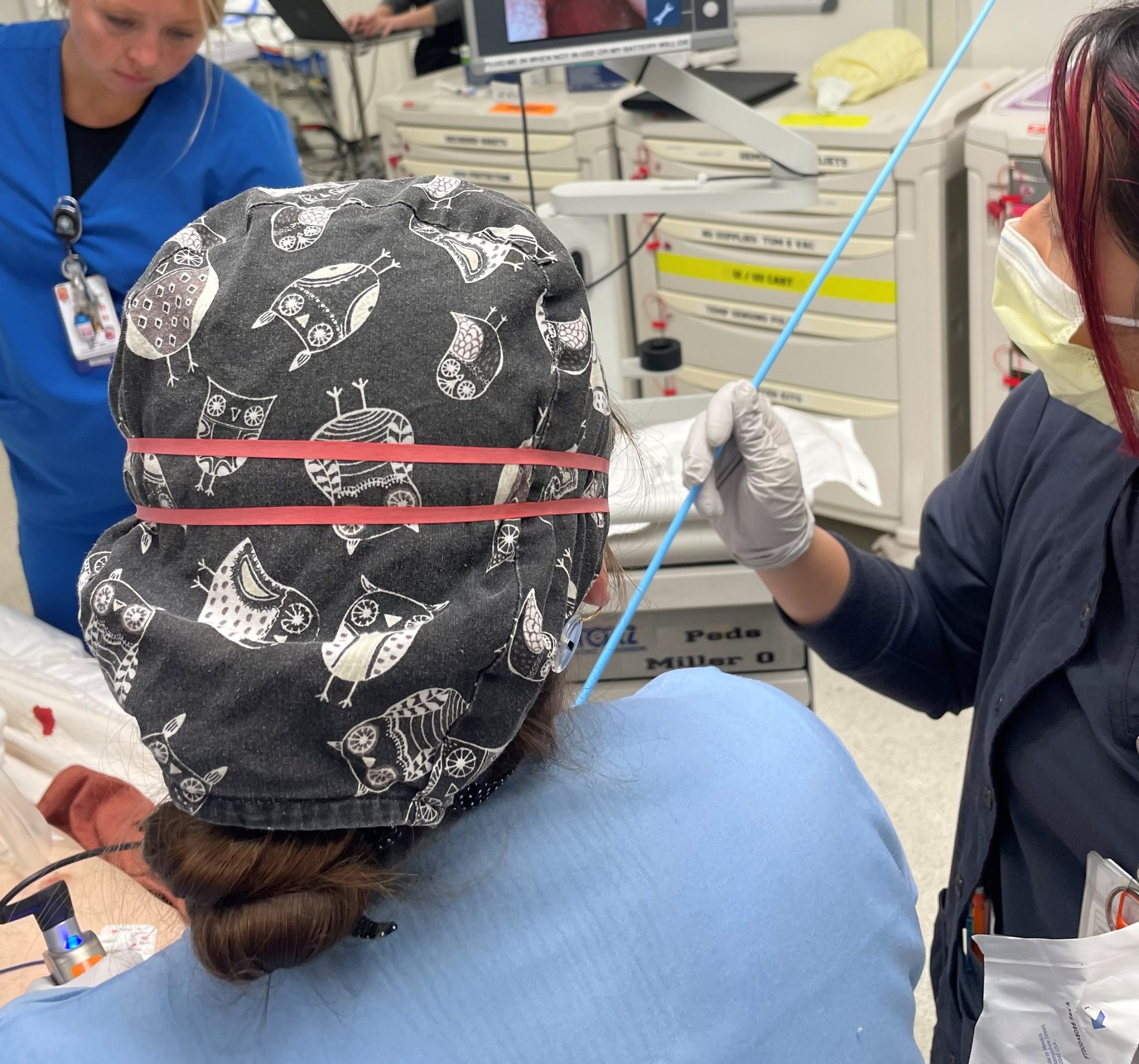Hitting the mark, setting standards for lifesaving care
by Hennepin Healthcare

Our emergency department (ED) sets high standards for emergency and trauma care. As a teaching hospital caring for some of the most critically ill and injured patients from throughout the state, ED team members know a thing or two about delivering the best care most efficiently and quickly to patients to ensure the best outcomes.
Most recently, HCMC’s ED and MICU were among 17 sites that participated in a study comparing tracheal intubation using video guidance to the traditional use of a direct laryngoscope for 1,417 patients throughout the United States. The DEVICE (DirEct Versus VIdeo LaryngosCopE) trial, published in the New England Journal of Medicine in August 2023, found that on first attempt, video guidance for intubation was extremely effective and more successful than the traditional approach. Using a video device became increasingly necessary during COVID and now continues.
“During COVID, the use of video laryngoscopy markedly increased because physicians could view the screen to complete the procedure, rather than putting their face very close to the patient’s mouth, possibly lowering risk of viral transmission from patient to doctor, or vice versa,” said Dr. Matthew Prekker, emergency and critical care physician who helped lead the trial and is the first author on the study. “We recognize that this may not be extremely interesting to the general public, but it is significant for the 5-10 of patients each day right here at HCMC who require intubation outside of the operating room.”
Visualizing the airway with video and intubating patients in this manner on the first try improved success, which corresponds with increased patient safety, and Dr. Prekker expects that it will be incorporated into professional guidelines and potentially change practice around the world.
“The traditional instrument used to perform intubation, a direct laryngoscope, had not changed in more than 70 years, and it’s the device most of us were trained with,” explains emergency physician Dr. Brian Driver, who is the trial’s second author. “Using a video laryngoscope helps physicians better visualize the vocal cords an increase the chances of a successful placement of the breathing tube on the first attempt, while reducing the risk for complications.”
Prior to this DEVICE trial, there wasn’t definitive evidence that one method worked better than the other. Now there is. A substantial portion of that data came from patients and physicians at HCMC.

